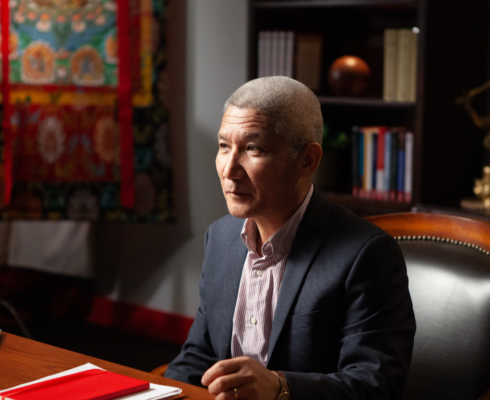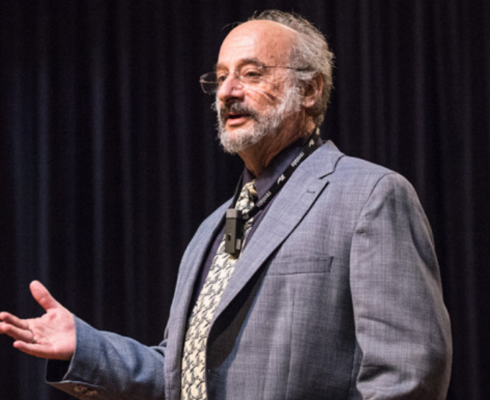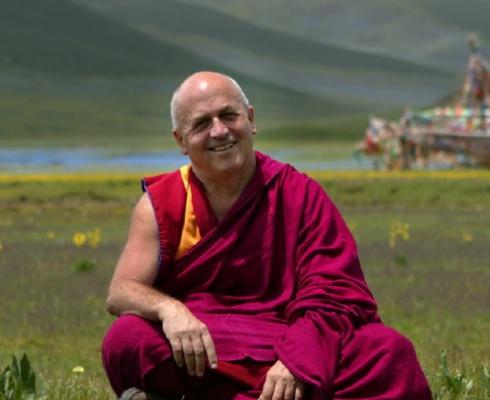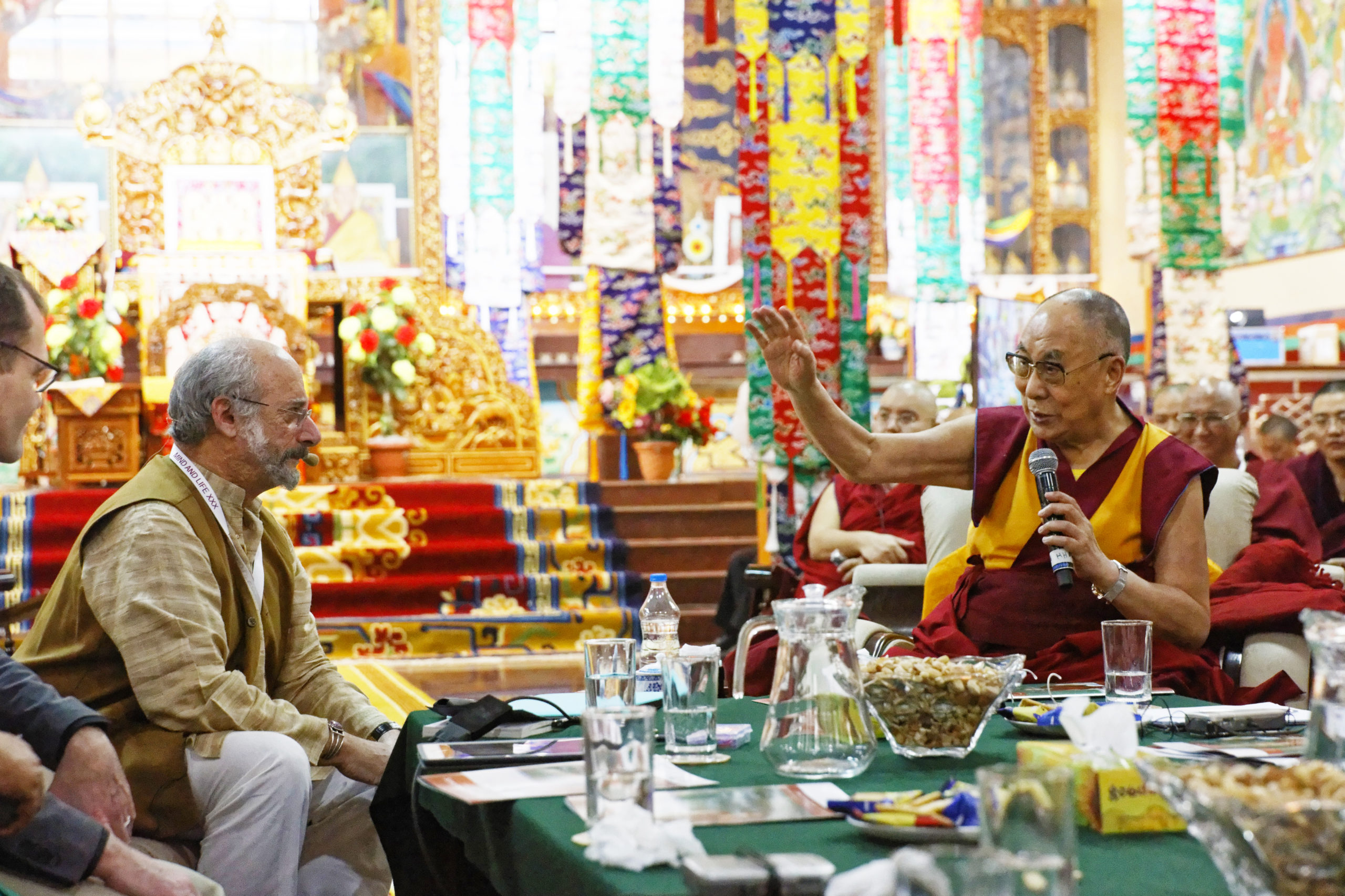
ONLINE COURSE
Illuminating the Mind
Join His Holiness the Dalai Lama in an exploration of the nature of mind with leading researchers, philosophers, and Buddhist scholars.
Produced in partnership with the

In this online course, join an inquiry into the nature of mind that has been going on between leading scientists, philosophers, contemplatives, and His Holiness the Dalai Lama for over thirty-five years. The course features a curated selection of conversations from past Mind & Life Dialogues that explore our evolving understanding of three aspects of mind: attention, perception, and self.
Your guide in this course will be Thupten Jinpa, the renowned Buddhist scholar and longtime translator for the Dalai Lama who has been a key contributor throughout the Mind & Life Dialogues. B. Alan Wallace, Anne Treisman, and Amishi Jha share three perspectives on attention from a Buddhist, psychological, and neuroscientific viewpoint. Thupten Jinpa and Catherine Kerr offer Buddhist and neuroscientific understandings on how objects are ascertained and constructed in the processes of perception. Then Jay Garfield and Matthieu Ricard investigate the nature of self, exploring tendencies toward self-grasping and how our own deeply held views of self can lead to either suffering or compassionate action. The course concludes with a powerful teaching from His Holiness the Dalai Lama from the Mind & Life archives.
To further support and deepen your understanding of the concepts presented in this course there are also three guided meditations from Jack Kornfield, Lama Willa Blythe Baker, and Tsoknyi Rinpoche. Additionally, you’ll have access to a course forum where you can discuss your learnings with an international community of students.
Tuition: $397
Self-study course: you can take this course at your own pace. Materials remain accessible to enrolled students so you can return to them again and again! For more about our terms, please see the Wisdom Academy FAQ. Wisdom is a 501(c)(3) nonprofit. All proceeds from this course go toward funding the nonprofit activities of Wisdom Publications and the Mind & Life Institute. We thank you for your support!
This is going to be a remarkable experience in which you’ll enrich your knowledge and practice with a multi-dimensional exploration of the mind, leading to greater understanding of yourself and others—and ultimately, greater happiness, peace, and effectiveness in the world.
Important Course Information & FAQs
-
-
-
- How much does the course cost? Course tuition is $397.
- When does the course start and what will the schedule be? The entire course is available now and you can take it at your own pace!
- Are the lessons live or recorded? The primary lesson videos are curated selections from the Mind & Life dialogue archive along with more newly recorded guided meditations.
- Will I lose access? Videos will be available on an ongoing basis for enrolled students.
-
-
Please click here for more FAQ.
Watch the Trailer

Lessons
Lesson 1: Introduction with Thupten Jinpa
Lesson 2: The Meditative Technology of Introspection with B. Alan Wallace
Lesson 3: The Neuroscience of Attention with Amishi Jha
Lesson 4: Modes of Attention with Anne Treisman (Includes guided meditation with Jack Kornfield)
Lesson 5: Perception: A Buddhist Perspective with Thupten Jinpa
Lesson 6: The Neuroscience of Perception with Catherine Kerr (Includes guided meditation with Lama Willa Baker)
Lesson 7: Western and Buddhist Philosophies of Self with Jay Garfield
Lesson 8: Self, Ethics, and the Science of Altruism with Matthieu Ricard (Includes guided meditation with Tsoknyi Rinpoche). The course concludes with a powerful presentation from His Holiness the Dalai Lama.
What You’ll Learn
By joining this course, you’ll learn:
-
-
-
-
- the three-part framework of Buddhist practice: ethics, meditation, and wisdom;
- the science of attention and mindfulness training;
- the Western psychological perspective on attention, and specifically focused versus distributed attention;
- Buddhist philosophical perspectives on attention;
- scientific findings on the interface of mind and body;
- a range of positions in Western and Buddhist philosophy regarding the self and the person;
- the connection between understanding self and creating a better world (including advice directly from the Dalai Lama);
- and much more.
-
-
-

Lesson 1: Introduction with Thupten Jinpa
In this first lesson, Dr. Thupten Jinpa provides an introduction to and overview of the course, which focuses on the intersection of science and Buddhist thinking in the areas of attention, perception, and self. As the Dalai Lama’s translator, a key participant in the Mind & Life Dialogues, and a renowned scholar, Dr. Jinpa is a uniquely qualified guide for your journey through this course. The background and objectives of the Mind & Life Dialogues are discussed, as well as the differences between the third-person perspective of modern science and the first-person approach in Buddhism. Dr. Jinpa introduces the foundations of many Buddhist philosophical textual traditions, and highlights the common methodological grounds shared by Buddhism and science in the investigation of the mind.

Lesson 2: The Meditative Technology of Introspection with B. Alan Wallace
In this lesson, Dr. B. Alan Wallace describes the three-part Buddhist framework of ethics, meditation, and wisdom. He then details the two mental faculties that are important for developing the practice of shamatha: mindfulness and meta-awareness. Deepening this exploration, Alan then moves on to discuss mindfulness, which he defines as the faculty of sustaining voluntary attention continuously upon a familiar object without forgetfulness or distraction. In his exploration of shamatha practice, Alan then discusses three methods of shamatha: mindfulness of breathing, observing the mind, and awareness of awareness. Finally, he addresses some common objections to introspection as a method of inquiry.

Lesson 3: The Neuroscience of Attention with Amishi Jha
In this lesson, Dr. Amishi Jha presents her scientific research on attention and mindfulness training. She begins by drawing comparisons between the traditional Buddhist concepts of manisikāra, which means “attention,” and sati, which means “remembering” or “taking hold,” and the neuroscientific concepts of attention and working memory. Dr. Jha then describes three components of attention: orienting, executive control, and alerting, and shares the methods used in her lab to index these three. She then discusses an experiment that examined all three components by comparing meditators to non-meditators to see which components were sensitive to mindfulness training. His Holiness the Dalai Lama offers several suggestions for future studies based on traditional meditation practices, especially visualization, that relate with working memory. Finally, Dr. Jha shares research on the impact of mindfulness training in protecting against the effects of aging as well as the relationship between working memory and positive and negative mood, and she asks His Holiness about the connection between mindfulness and emotion regulation from a Buddhist point of view.

Lesson 4: Modes of Attention with Anne Treisman
In this lesson, Dr. Anne Treisman presents from the Western psychological perspective on attention. She describes two modes of attention: focused and distributed. Focused attention acts like a spotlight—it is more narrow, excludes other stimuli, and functions to provide us information around the details of an object. Distributed or global attention is broader, less detailed, and gives us the general gist of whatever we’re observing rather than the details.
Dr. Treisman also explains how the information collected through attention is stored in separate places in the brain and acknowledges the question that then arises: how do we end up experiencing integrated objects with all their properties—shape, color, orientation, size, distance, and so on? This is known as the “binding problem.”
Finally, she explores the role of unconscious information on behavior and analyzes the effects of meditation training in terms of the breadth of one’s focus, the efficiency of focus, the overall capacity of attention, and our ability to move between different levels of processing.
The lesson also features a guided meditation with Jack Kornfield that will help you start to apply your learnings about attention.

Lesson 5: Perception: A Buddhist Perspective with Thupten Jinpa
In this lesson, Dr. Thupten Jinpa gives a presentation on perception from a classical Indian perspective. Jinpa first explains the conditions for perception arising. He then moves on to discuss Dharmakirti’s contribution toward understanding perception as free of conceptuality, and how Dharmottara resolves the tension between Dharmakīrti’s understanding of perception being free from conceptuality, but also being a reliable source of knowledge. He also discusses 1) how perception is defined, and 2) how understanding perception as being free of conceptuality raises important tensions within Buddhist epistemology, especially for the key question of how our perception and thoughts interact in creating an integrated cognitive experience of the world.

Lesson 6: The Neuroscience of Perception with Catherine Kerr
In this lesson, Dr. Catherine Kerr explores scientific findings that suggest perception of body sensations takes place precisely at the interface between mind and body. Her work suggests mindfulness practice enhances the mind’s ability to control the “volume” of simple body-related neuronal signals. In addition, she describes a higher-order body perception network in the brain that integrates touch, joint and muscle sensations, and visual images of the body to produce a three-dimensional ego-centric map of the body in space. Finally, she asks if the neuroscience of body perception networks can provide a tractable basis for investigating the effects of contemplative practices that focus on changing the experience of the body in space.
The lesson also features a guided meditation with Lama Willa Blythe Baker that will help you start to apply your learnings about perception.

Lesson 7: Western and Buddhist Philosophies of Self with Jay Garfield
In this lesson, Dr. Jay Garfield describes the range of positions in Western and Buddhist philosophy regarding the self and the person, issues with various views, and what problems each view confronts. He looks briefly at the substantialist views of self against which most Buddhist and contemporary Western views are developed. Dr. Garfield also presents questions about synchronic and diachronic unity and identity and distinguishes between a conventionally established person and an intrinsically real self. He explores reductionist, supervenience, bundle, and sequential models of selfhood before turning to narrative and socially constructive models of the self and no-self in both traditions. The presentation concludes with some observations about the ethical implications of self-grasping and of selflessness.

Lesson 8: Self, Ethics, and the Science of Altruism with Matthieu Ricard
As we consider the views of both Buddhist philosophy and Western science on the nature of the self, this lesson asks us to consider: What are the implications of our interactions with others and our behavior in the world? What can we make of the idea that the self is constructed and that all phenomena, including “selves,” are interdependent and mutually coarising?
In our concluding lesson, Dr. Matthieu Ricard discusses how the way in which we conceive of the self has deep repercussions on our relation to ourselves, to others, and to the world. He also distinguishes between the notions of altruism, empathy, and compassion and presents some ways in which we can enact both individual change and societal change by adopting a more compassionate, selfless attitude.
The lesson also features a guided meditation with Tsoknyi Rinpoche on self and emptiness, and an inspiring video teaching from the Dalai Lama that shows how to apply your learnings in your life, for the benefit of yourself and others.
I have been blown away by introduction . . . watching the video has been like drinking water after a long dry spell in a desert, with multiple feeling of excitement, happiness, curiosity and wanting more!
Thupten Jinpa’s lesson was such a gift, so clearly and kindly bringing to my attention an explosion of thoughts, ideas, and areas to recall and explore.
Thank you for this course, which has already helped me to appreciate more how rich and profound Buddhist science is, AND to value the work of great translators like Thupten Jinpa. He builds bridges for westerners like me, providing us with a means to access and reflect on this 1st-person approach.
A rich banquet for spirit and mind.
I cannot adequately describe the gratitude I feel for this program you have offered. So enthusiastic, from the very beginning, really improving and correcting my view, through this wealth of shared knowledge, with fantastic information and meditation practices, to carry forward. The final very inspirational lesson, encouraging me to augment and broaden my aspiration, increasing my motivation to continue learning and diligently practice. Now, my intention is to repay your compassion & kindness to other living beings of this world, because I cannot possibly thank you all enough. Rejoice!
This introduction by Thupten Jinpa and the reading amazed me much more than I expected. I really thank life for bringing me answers through this wonderful course.
 His Holiness the Dalai Lama is the spiritual leader of the Tibetan people, a Nobel Peace Prize recipient, a beacon of inspiration for Buddhists and non-Buddhists alike—and the inspiration behind this course. His Holiness is known and admired for his more than four decades of systematic dialogues with scientists exploring ways to develop new evidence-based approaches to alleviate suffering and promote human flourishing. He is the co-founder of the Mind & Life Institute and has helped to revolutionize traditional Tibetan monastic curriculum by incorporating the teaching of modern science. He is a great champion of the great Indian Nalanda tradition of science, philosophy, and wisdom practices.
His Holiness the Dalai Lama is the spiritual leader of the Tibetan people, a Nobel Peace Prize recipient, a beacon of inspiration for Buddhists and non-Buddhists alike—and the inspiration behind this course. His Holiness is known and admired for his more than four decades of systematic dialogues with scientists exploring ways to develop new evidence-based approaches to alleviate suffering and promote human flourishing. He is the co-founder of the Mind & Life Institute and has helped to revolutionize traditional Tibetan monastic curriculum by incorporating the teaching of modern science. He is a great champion of the great Indian Nalanda tradition of science, philosophy, and wisdom practices.







